|
|
|
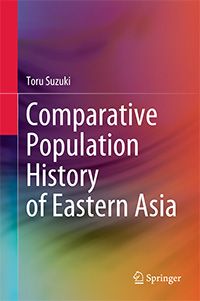
|
Toru Suzuki
COMPARATIVE POPULATION HISTORY
OF EASTERN ASIA
Springer, 2024, 214 pages
|
https://link.springer.com/book/10.1007/978-981-99-9367-3
|
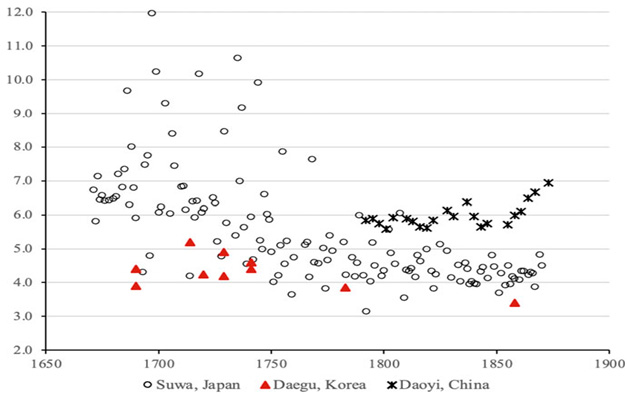
Средний размер домохозяйства в досовременной
Восточной Азии (стр. 89)
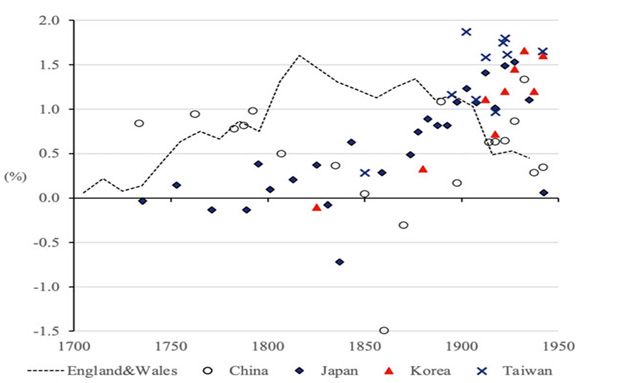
Темпы роста численности населения в 1700–1945
гг. (стр. 106)
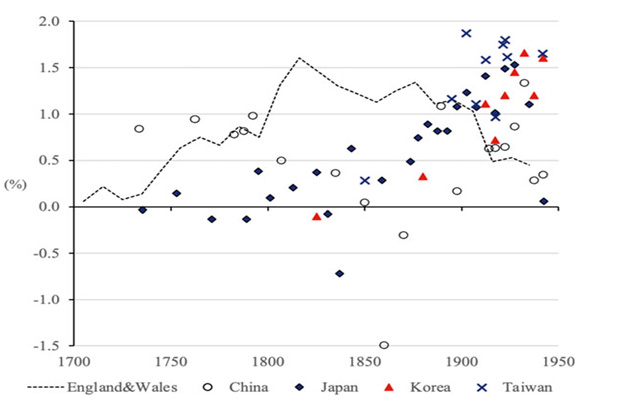
Средний размер домохозяйства: 1920–40
гг. (стр. 138)
| |
Япония
|
Корея
|
Тайвань
|
Китай
|
|
1920
|
4,99
|
|
5,30
|
5,37
|
|
1925
|
4,98
|
5,25
|
5,50
|
|
|
1930
|
5,07
|
5,28
|
5,68
|
|
|
1935
|
5,13
|
5,33
|
5,81
|
5,38
|
|
1940
|
5,02
|
5,30
|
5,85
|
|
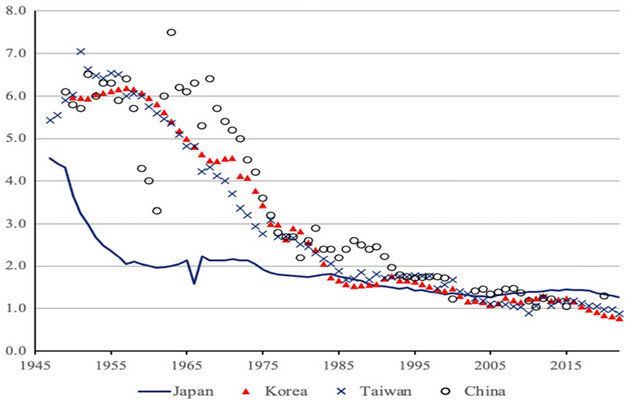
Суммарный коэффициент рождаемости: 1947–2022
гг. (стр. 147)
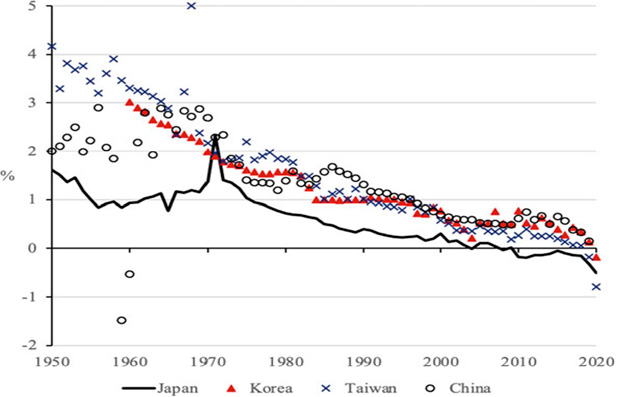
Темпы роста численности населения: 1950–2020
гг. (стр. 159)
|
В книге сравнивается история населения Японии, Кореи,
Тайваня и Китая, для того чтобы понять такие происходящие изменения
в динамике демографических процессов как чрезвычайно низкая рождаемость
в Корее и Тайване, интенсивная урбанизация и множественные диаспоры
из Кореи, раннее старение населения по сравнению с экономическим
развитием в Китае и изменение климата, модели трансграничной миграции
в регионе. После обсуждения происхождения каждой этнической группы
рассматриваются изменения в численности населения в до современную
эпоху основе обзора исторических демографических исследований, в
том числе написанных на местных языках. Также представлена новая
оценка численности населения Кореи в до современный период. Темы,
затронутые в этой книге, включают рост численности населения, рождаемость,
смертность, внутреннюю и трансграничную миграцию, брачность, разводимость
и домашние хозяйства. Контрасты между экономическими и демографическими
гигантами (Китаем и Японией), бывшими японскими колониями (Кореей
и Тайванем), феодализмом и конфуцианством (Японией и другими странами),
капитализмом и социализмом одних и тех же этнических групп (Южной
и Северной Кореи, Тайваня и Китая) позволяют по-новому взглянуть
на динамику численности населения по отношению к политическим, экономическим
и культурным переменам.
Contents
1 Introduction-Present and Future of Eastern Asia
References
2 Origins of Eastern Asian Peoples
2.1 Diffusion of Homo sapiens to Eastern Asia
2.2 Sino-Tibetan Language Family and Formation of Han Chinese
2.3 Ethnic Composition of Taiwan
2.4 Altaic Language Family and Japanese-Korean-Ainu Group
2.5 Jomon People and Ainu Language
2.6 Yayoi People and Proto-Japanese Language
2.7 Old Korean Languages and Foundation of Han Koreans
2.8 Origin of Mongolic Peoples
2.9 Summary and Conclusion
References
3 Socioeconomic and Demographic Transitions
3.1 Historical Periods
3.2 Overview of Population Growth
3.3 Summary and Conclusion
References
4 Population in Premodern Eastern Asia
4.1 Population and Agriculture
4.2 Positive Checks
4.3 Climate Changes
4.4 Major Population Collapses
4.5 Premodern Population Estimates of China
4.6 Premodern Population Estimates of Japan
4.7 Premodern Population Estimates of Korea
4.8 New Population Estimation for Premodern Korea
4.9 Premodern Population Estimates of Taiwan
4.10 Mortality Factors in Agrarian Society
4.10.1 Premodern Major Epidemics
4.10.2 International Transmission of Infectious Disease
4.10.3 Broad Range Famines in Eastern Asia
4.10.4 Epidemics and Famines During Wars and Rebellions
4.10.5 Demographic Impacts
4.11 Premodern Demographic Indicators
4.12 Premodern Household
4.13 Summary and Conclusion
References
5 Population in Modern Eastern Asia
5.1 Western Impacts
5.2 Modern Population Growth in Japan
5.3 Modern Population Growth in Korea
5.4 Modern Population Growth in Taiwan
5.5 Population of Modern China
5.6 Internal Migration in Modern Period
5.7 Cross-Border Migration in Modern Eastern Asia
5.8 Demographic Transition
5.8.1 Crude Birth Rate and Crude Death Rate
5.8.2 Nuptiality, Fertility, and Mortality
5.8.3 Causes of Deaths
5.9 Modern Household Changes
5.10 Summary and Conclusion
References
6 Population in Contemporary Eastern Asia
6.1 Upheavals and Developments
6.2 Fertility Transition
6.3 Mortality Decline and Epidemiological Transition
6.4 Population Growth Rate and Age Structure
6.5 Marriage and Divorce
6.6 Contemporary Household Changes
6.7 Urbanization in Contemporary Period
6.8 Cross-Border Migration in Contemporary Eastern Asia
6.8.1 Overseas and Foreign Populations
6.8.2 Cross-Border Marriages
6.9 Population of DPR Korea
6.10 Summary and Conclusion
References
7 Concluding Remarks
Character List
Maps
|

